Tamper-evident packaging technology is designed to show “visibly” if a product has been tampered with. From the food and beverage industry to pharmaceuticals, tamper-evident packaging not only helps businesses meet regulatory requirements but also instills a strong sense of trust in customers by ensuring the authenticity and safety of their purchases.
In this article, we will explore the essential features of tamper-evident technology and how businesses can benefit from incorporating these advanced protection measures into their packaging systems. Understanding these features helps any company looking to enhance product security and maintain consumer trust.
What is Tamper-Evident Technology?
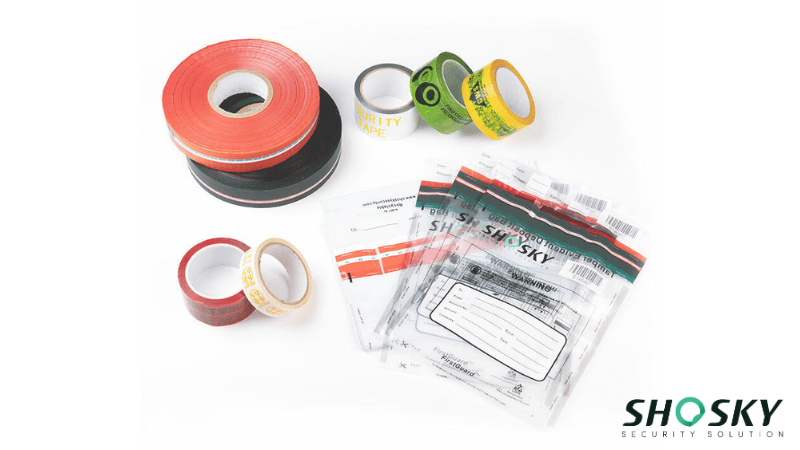
Tamper-evident technology refers to the various methods used to detect and prevent unauthorized access or tampering with packages, containers, or products. These methods include tamper-evident seals, security labels, shrink wraps, tapes, and specially designed packaging materials.
The primary objective of tamper-evident technology is to provide visible evidence of any attempt to open, alter, or manipulate a product or package. Tamper-evident seals and labels, for instance, leave behind visible marks or damage when removed, signaling to both consumers and handlers that the product has been compromised.
To achieve this objective, tamper-evident technology exhibits the following main features:
- Visible tamper indicators, such as irreversible color changes or “void” messages on seals
- Permanent damage upon opening the packaging materials or labels
- High-performance adhesive strength that prevents clean removal or resealing
- Serialization or numbering systems for product tracking and traceability
- Advanced authentication elements like holograms, microtext, or RFID integration
- Tamper response technologies, including heat, pressure, or chemical-reactive materials
These features make tamper-evident technology play a critical role in maintaining product integrity, preventing fraud, and ensuring safety. They are widely used in industries such as food and beverages, pharmaceuticals, electronics, and luxury goods, where the authenticity of the product is paramount to consumer trust and regulatory compliance.
How Tamper-Evident Technology Functions and Meets Global Standards?

Tamper-evident technology operates through a combination of physical and digital mechanisms designed to detect and deter unauthorized access.
On the physical side, packaging components such as seals, bands, and breakable caps are engineered to reveal visible signs when interference occurs. For instance, seals on medication bottles may change color or reveal warning messages when opened, signaling that the product has been compromised.
Beyond physical protection, many industries are turning to digital solutions for added security. Technologies such as RFID and NFC enable real-time tracking and monitoring. These smart tags can alert manufacturers or distributors when a product is accessed unexpectedly, enabling faster response and improved supply chain transparency.
To ensure consistent product safety, international regulatory bodies have established strict packaging standards.
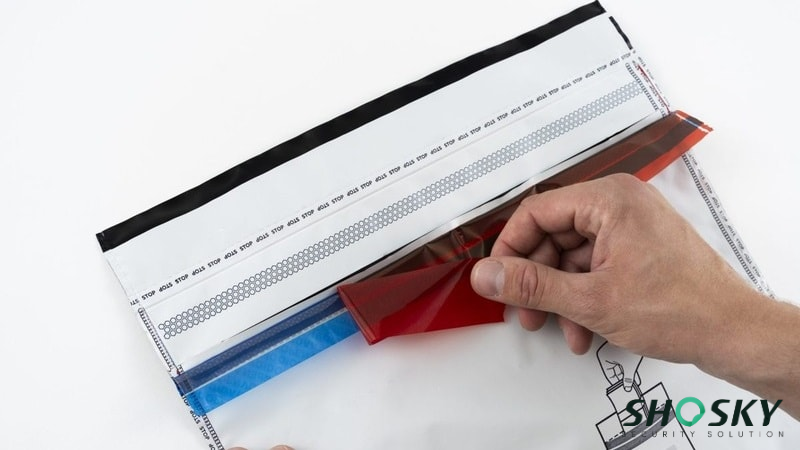
The FDA (Food and Drug Administration) in America mandates tamper-evident packaging for over-the-counter drugs, requiring clear indicators of tampering such as foil seals or safety bands.
Similarly, the EMA (European Medicines Agency) enforces the Falsified Medicines Directive, which mandates serial numbers and tamper-evident features on pharmaceutical packaging to combat counterfeiting.
Complying with these global regulations not only helps businesses protect their products but also strengthens consumer trust. It shows a commitment to quality and transparency, which is essential for maintaining credibility and safety across international markets.
Tamper-Evident vs. Tamper-Proof vs. Tamper-Resistant Technology
When it comes to product security, it’s essential to understand the distinctions between tamper-evident, tamper-proof, and tamper-resistant technologies. While these terms are often used interchangeably, they represent different approaches to product protection, each with unique functions, applications, and limitations.
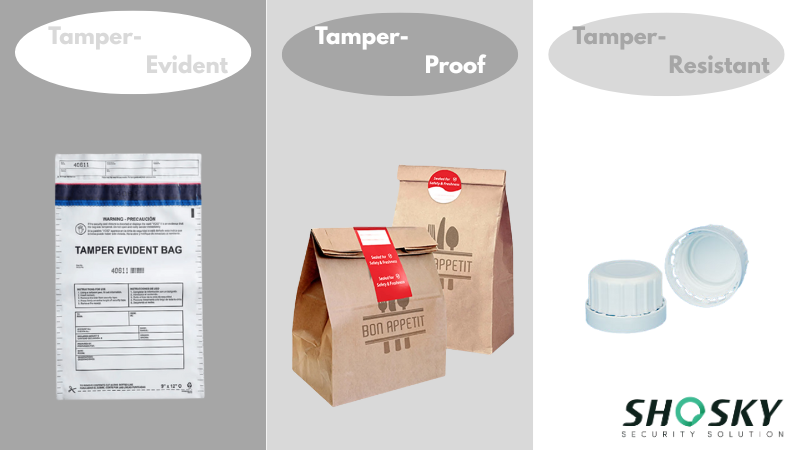
| Feature | Tamper-Evident | Tamper-Proof | Tamper-Resistant |
|---|---|---|---|
| Primary Function | Shows visible evidence if tampered | Prevents tampering entirely (as much as possible) | Deters tampering by making access difficult |
| Tamper Detection | Yes – visual indicators like labels or seals show tampering | Not applicable – designed to be impossible to tamper with | Not always – may not show signs of tampering clearly |
| Tamper Prevention | No – focuses on detection rather than prevention | Yes – strongest form of prevention, often with irreversible construction | Partially – makes tampering difficult but not impossible |
| Common Applications | Pharmaceuticals, food safety, electronics, retail packaging | High-security environments, forensic containers, military-grade products | Consumer goods, food packaging, retail, confidential documents |
| Examples | Void labels, hologram seals, breakable caps, tamper-indicating tape | Locked cash boxes, sealed evidence bags, welded casings | Child-resistant caps, shrink wraps, clamshell packages, secure zipper bags |
| User Access | Easy to open but reveals tampering | Often requires forceful destruction to access contents | Can be challenging to open but designed for consumer use |
| Visual Proof of Tampering | Always | Not necessarily – goal is to prevent access completely | Not guaranteed – focuses more on resistance than clear visual indicators |
Tamper-evident solutions are designed to expose interference, tamper-resistant options are built to discourage it, and tamper-proof technologies aim to eliminate it entirely. However, true tamper-proof packaging is rare and usually used in highly secure environments.
For most businesses, combining tamper-evident and tamper-resistant features provides a practical balance between security and usability, especially in industries like food, pharmaceuticals, and electronics, where both deterrence and detection are crucial.
Types of Tamper-Evident Packaging Solutions
There are different types of tamper-detecting packaging solutions, including tamper-evident tapes, tamper-evident seals, tamper-evident labels, and tamper-evident bags. Each of these types is designed to safeguard the integrity of products in industries such as logistics, banking, pharmaceuticals, and electronics. Here’s a detailed look at these options:
1. Tamper-Evident Tapes
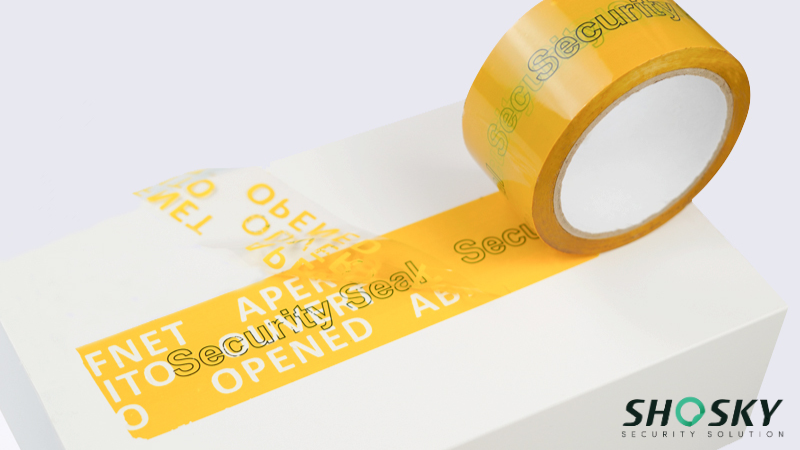
Tamper-evident tapes are essential for securing cartons, packages, and shipments, providing clear evidence if tampered with. These tapes reveal clear evidence of tampering when removed or altered, often displaying messages like “VOID” or “OPEN“. Several types of security tapes are commonly used depending on the application.
- Full-transfer security tape: Leaves a visible “VOID” message on the surface when tampered with. This provides unmistakable proof that the package has been interfered with, ensuring the protection of products during transit. It is highly visible and commonly used for high-risk shipping items like electronics and valuable goods.
- Non-transfer security tape: Does not leave any residue on the surface but reveals a hidden message, such as “VOID,” on the tape itself. This type is perfect for items requiring a cleaner look, such as luxury goods or delicate packages, while still offering reliable evidence without damaging the product.
- Partial-transfer security tape: Strikes a balance between visibility and minimal residue. Upon tampering, it leaves a semi-tacky message like “VOID” or “OPEN” on the surface. This tape is ideal for sensitive products like medications and office supplies, where clear tampering evidence is needed without excessive residue.
2. Tamper-Evident Seals
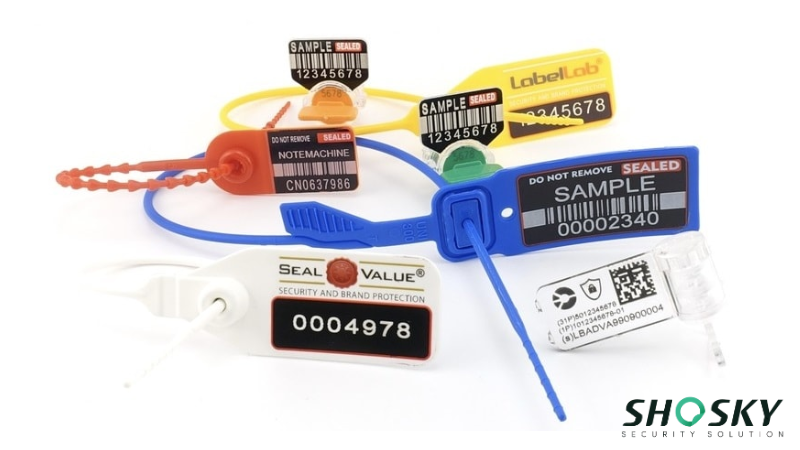
Tamper-evident seals are commonly applied to secure bottle openings, lids, containers, and other packaging. These seals provide immediate proof of tampering by breaking or leaving marks when disturbed. Here are a few types of these seals: plastic security seals, cable seals, and container seals.
- Security Seals: Designed for one-time use, these seals provide a simple yet effective tamper-evident solution. They are commonly used for securing food and beverage packaging.
- Cable seals: Among the most secure options available for anti-tamper protection, particularly suited for valuable shipments, such as cargo, electronic goods, or highly sensitive items.
- Container seals or lids: Comply with ISO 17712 standards and offer the highest level of security for international shipments, ensuring that containers remain untouched and secure during transit. These locks are designed to meet global shipping requirements, providing peace of mind to both shippers and recipients.
3. Tamper-Evident Labels
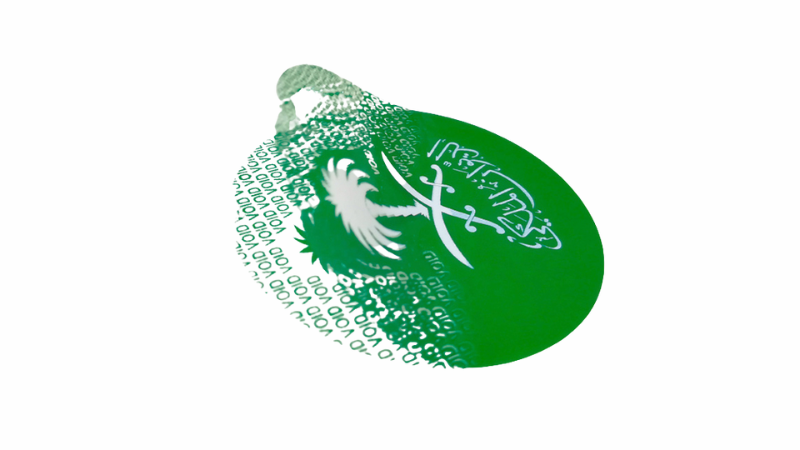
Tamper-evident labels are among the most secure tamper-detecting measures. These labels disintegrate into tiny fragments when removed, making it impossible to reuse or replace them without leaving behind any damage. Often used for electronic devices, automotive parts, and high-value items, these labels incorporate additional protection features like watermarks, microtext, or invisible UV printing for enhanced surveillance.
Here are a few types of these labels: foamtac destructible labels, co-extruded destructible labels, and hologram destructible labels:
- Foamtac destructible labels: Made from unique foam-like stuff that combines elasticity with waterproof and oil-proof properties. These labels are highly versatile and can be used on uneven or irregular surfaces (such as on medicine openings), making them perfect for products that require protection in harsh or challenging environments.
- Co-extruded destructible labels: Crafted from PP synthetic paper, a material known for its durability while maintaining the fragile, tamper-detecting characteristics of ultra-destructible labels. Their extra level of security makes them suitable for applications in industries like food, electronics, automotive, and industrial equipment.
- Hologram destructible labels: Combine high-protection features with striking visual effects. The combination of holographic effects with ultra-destructible properties ensures that these labels provide enhanced shielding against counterfeiting.
4. Tamper-Evident Bags
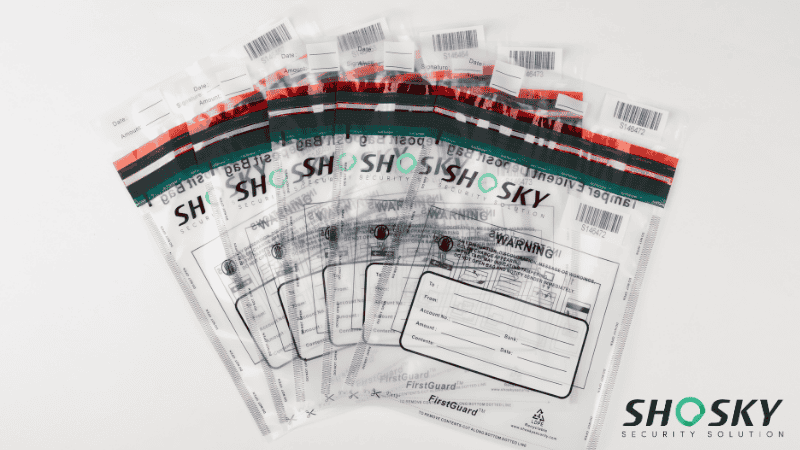
Tamper-evident bags are essential for securely transporting and storing sensitive or valuable items across various industries, such as banking, retail, and pharmaceuticals. These bags provide clear signs of tampering, offering a reliable way to protect goods during transit. There are several types of tamper-evident bags designed for different applications:
-
Evidence Bags: Used primarily in legal and forensic settings, evidence bags securely store crime scene materials or legal documentation. These bags feature serialized barcodes, write-on panels, and strong tamper-evident seals to ensure chain-of-custody integrity.
-
Duty-Free Bags: Found in airports and international retail, duty-free bags are designed to prevent product access during transit. These transparent bags often include a tamper-evident seal and a purchase receipt pocket to meet customs and airline regulations.
-
Deposit Bags: Used for transporting cash, checks, and confidential paperwork, deposit bags come with high-strength seals resistant to heat, cold, and solvents. They may include dual pockets for the separation of contents and tracking information, making them essential for banking and retail operations.
Industries That Require Tamper-Evident Packaging
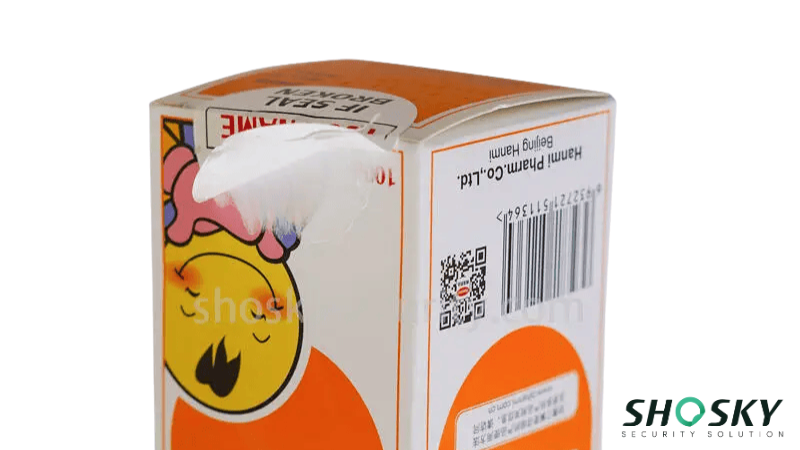
Tamper-evident packaging plays a vital role in safeguarding products, building consumer trust, and ensuring regulatory compliance. Among the many industries that rely on it, the following three stand out for their high stakes and well-documented use cases:
Pharmaceuticals
In the pharmaceutical industry, tamper-evident packaging is essential to protect patient safety and comply with stringent regulations. Medications, vaccines, and medical devices must arrive untouched and authentic. A well-known example is the Tylenol crisis in the early 1980s, when tampered capsules led to multiple fatalities.
In response, Johnson & Johnson introduced tamper-evident seals and triple-layered packaging, setting a new safety benchmark. This move not only restored public trust but also influenced FDA packaging guidelines that are still in place today.
Food and Beverage
Food and beverage companies use tamper-evident seals, caps, and films to prevent contamination and ensure product freshness. Coca-Cola, for instance, enhanced its product security after isolated incidents of bottle tampering were reported.

The company introduced specially designed bottle caps that show clear visual evidence if the seal has been broken. This improvement helped reinforce consumer confidence and strengthened the brand’s commitment to safety across global markets.
Transportation and Logistics
In the logistics industry, tamper-evident tape, seals, and smart locking systems are used to detect unauthorized access during storage and transit. Leading courier and freight companies often rely on serialized labels or tamper-evident tags to secure cartons, pallets, and even shipping containers.
For example, DHL uses secure tape and tamper-evident seals to monitor high-value shipments. These measures help ensure accountability across the supply chain and prevent losses from theft or fraud.
By implementing tamper-evident technologies, companies in these industries not only comply with regulations but also demonstrate their dedication to safety, quality, and customer trust.
Trends and Future of Tamper Technology
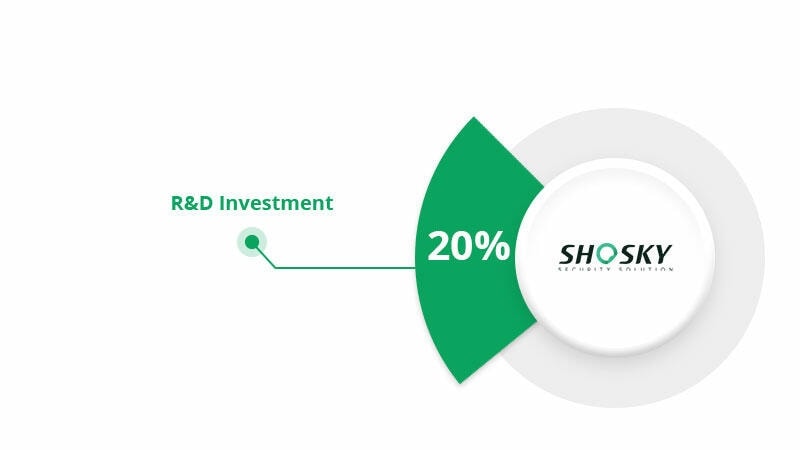
Tamper technology is advancing quickly, fueled by innovations in materials, digital technology, and increasing consumer demand for security and transparency. Smart labels and RFID tags are becoming popular for their ability to track product status in real-time and detect unauthorized interference.
Blockchain technology is another breakthrough, offering immutable records of product authenticity and supply chain movements, ensuring that tampering attempts are instantly identifiable.
Sustainability is also shaping the future of tamper-evident packaging. Manufacturers are increasingly using biodegradable and recyclable materials to meet eco-friendly standards without compromising on security.
For example, plant-based adhesives and dissolvable tamper-evident labels are being developed to reduce waste. This shift not only addresses environmental concerns but also appeals to eco-conscious consumers and businesses.
Artificial intelligence (AI) is playing a transformative role in tamper detection. Advanced AI algorithms integrated with IoT devices enable predictive analysis and instant alerts for potential tampering incidents.
For instance, AI-powered cameras and sensors can identify subtle changes in packaging or seals, offering unparalleled accuracy in security monitoring.
As tamper technology continues to advance, it promises to deliver smarter, greener, and more efficient solutions to meet the ever-evolving demands of global industries.
FAQs
What do you do if the tamper seal is broken?
If the tamper seal is broken, report it to the supplier or retailer with photos. Do not use the product and follow their instructions for a refund or replacement.
Are tamper-evident packaging solutions expensive?
The cost of tamper-evident packaging can vary depending on the type and complexity. Basic solutions are affordable, while more advanced options may be more expensive.
What is the tamper seal on a fire extinguisher?
The tamper seal on a fire extinguisher is a plastic or wire device that secures the safety pin in place. It shows if the extinguisher has been used or tampered with, ensuring it’s ready for emergency use.
Conclusion
Tamper-evident technology plays a critical role in safeguarding products. And now, with advancements in tamper-evident strategies, businesses have a wide array of options! Whether you choose anti-tamper seals, tapes, labels, or bags, these solutions provide clear markings or signs of tampering, preventing unauthorized access and helping to maintain product integrity across various industries.
Invest in Tamper-Evident Technology of Shosky to Secure Your Products
Shosky Security is here to help! If you’re looking to enhance the safety of your products and build customer trust, now is the time to explore tamper-evident technology. Contact us today at Shosky Security to discuss how our customized anti-manipulation solutions can meet your unique security needs.

